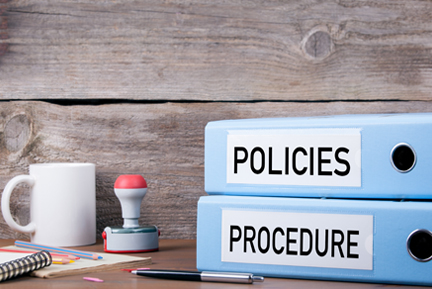
Eight Elements Every Drug-Free Workplace Policy Should Include. Does Yours?
(Spring 2018) The best approach for you, as an employer, to prevent and respond to alcohol and other drug issues in your workplace is to incorporate all five elements of a drug-free workplace program – policy/operations, employee education, supervisor training and employee assistance.
Operating a drug-free workplace program requires you to navigate both legal issues (e.g., privacy, search and seizure, disability, discrimination) and operational procedures (e.g., how to respond to reasonable suspicion). Therefore, at the core of every drug-free workplace program should be a drug-free workplace policy. This written document
- explains the measures you are taking to limit your legal exposures,
- provides standardized protocols for administering your program fairly, and
- gives employees fair notice of what is expected of them regarding their use of substances, when they will be tested and how they can access assistance.
When written and communicated well, your policy and accompanying operations can establish a drug-free culture and minimize time spent dealing with related issues. A single-page document will simply not suffice. Yet in a recent survey of Ohio businesses, only about half of the over 3,200 respondents had a drug-free workplace policy longer than a page. It’s a good bet that something is missing from those policies/operations that could cause problems down the road.
So what should be included in an effective and efficient drug-free workplace policy/operations?
- Purpose statement: Explains why the company is implementing a drug-free workplace program and your commitment to establishing a healthy, safe and productive workplace.
- Company contacts: Offers contact information for the person(s) responsible for overseeing the operations of the program and how employees get in touch with that individual(s).
- Who is covered by the policy: Lists all classifications of workers covered under the policy (e.g., full and part-time employees, seasonal or temporary workers, interns, volunteers, subcontractors). Make sure your policy identifies all parties that must follow it.
- Key definitions: Minimizes any misunderstandings by clearly explaining what the terms in your policy mean. For example, be sure to carefully define
- accident
- confidentiality
- company property
- on-the-job
- refusal to drug test
- under-the-influence
- Information about assistance: Lets employees know the resources available to them if they or a family member is experiencing an alcohol or other drug issue. You also need to outline how a mandatory referral would work if an employee tests positive and will be offered a second chance.
- Rules and expectations: Addresses all the areas and situations your policy is intended to cover. For example
- illicit drug use, including any state-specific expectations about the use (or prohibited use) of marijuana as medicine
- the use of prescription and over-the-counter medications
- the use of alcohol and when, if ever, it can be consumed, purchased or possessed while at work, at work-related events, or while traveling out of town on company business
- on-call expectations
- off-duty use
- complying with testing
- Testing applications and procedures: Drug testing is a form of search and seizure, and since adverse employment action could result based on the test results, it’s important to provide details around
- when testing will occur
- how testing will be done
- what drugs are being tested for
- what recourse an employee has to contest or appeal a positive result
- Consequences of program violation: Outlines what employees can expect if they violate your policy. This helps you operate your program consistently and fairly – without emotion – so management can avoid the temptation of acting on a case-by-case basis.
The more details your policy and operations provide, the more carefully it will be followed by employees and administered by management. In fact, to help with clarity, some companies will break their policy into two documents:
- The policy that serves as an executive summary communicating expectations, requirements and available resources to employees.
- The accompanying written procedures outlining how the company will handle virtually any alcohol and other drug issue and provide support to supervisors and managers in addressing an issue that can be difficult.
Whether you have two separate documents or they are combined into one, all employees need to receive a copy of your policy and operations and have the opportunity to ask questions and get guidance about where to go for answers in future dealings with the program and these issues. Similarly, all supervisors and managers need training on the program operations and any related forms required to administer the program.
Finally, remember that your drug-free workplace program interacts with other corporate and H.R. policies and practices of your organization. So, no matter how long your policy is – hopefully, it’s longer than a page – it’s good practice to review it at least annually and run it past your legal counsel. Make sure adjustments are made for any changes in the law and that it covers everything you are currently doing in your drug-free workplace program. And if it doesn’t or you are not sure, reach out to a drug-free workplace program expert, like Working Partners®, for help filling in the gaps.
*The content in this article is meant for informational purposes only and not for the purpose of providing legal advice. The information should not be used as a substitute for consultation with a legal professional or other competent advisors.*